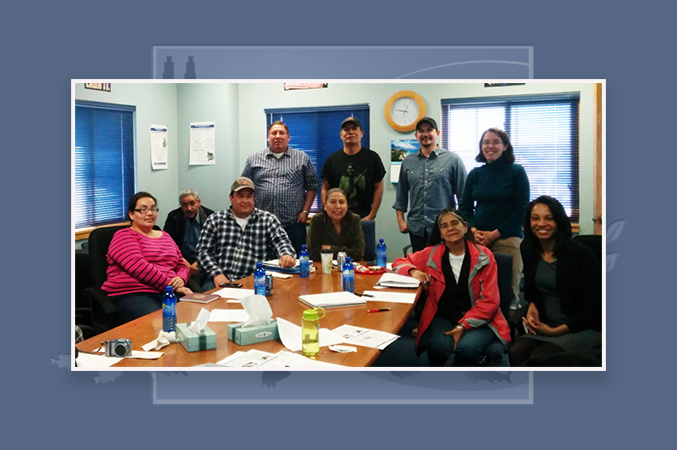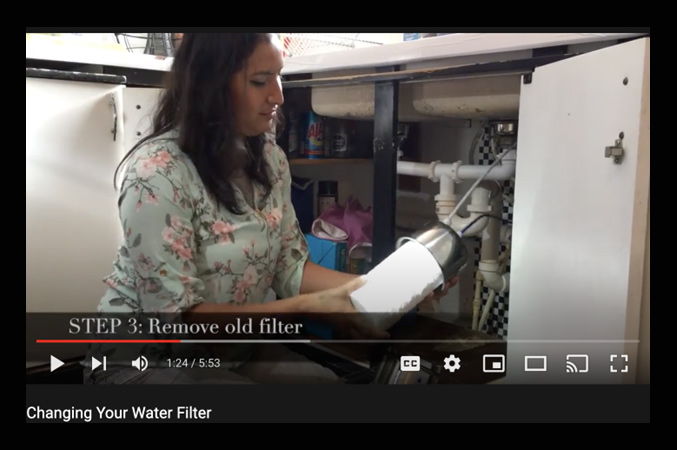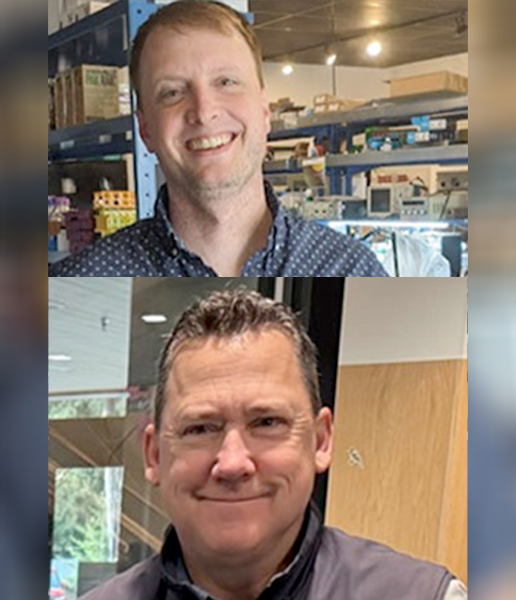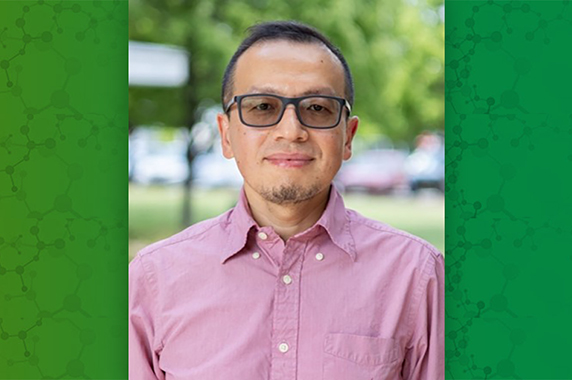Arsenic Mitigation Program Reduces Exposure for Well Users in Native Communities
Arsenic in drinking water is a public health issue that largely affects private well users in rural areas. A community-led program is addressing this issue in the Great Plains region of the U.S. Consuming excess arsenic can lead to increased risk of several types of cancer, cardiovascular disease, and diabetes.
Rural, Native communities in the Northern Great Plains region of the U.S. face greater arsenic contamination due to elevated levels in groundwater and a reliance on private wells rather than a filtered public water source. Researchers at the Johns Hopkins Bloomberg School of Public Health, Columbia University, and Missouri Breaks Industries Research, Inc. partnered with Tribal government in the Great Plains and Indian Health Service to establish the Strong Heart Water Study to develop and evaluate a community-led arsenic mitigation program for private well users. This study built upon the long-running Strong Heart Study that examined cardiovascular disease in these communities.
Participants in the water study were divided into two groups — one that received arsenic filters and arsenic health communication through a mobile health intervention and another that received the same but were also visited at home. Researchers compared the approaches to determine whether more information provided through in-home visits encouraged participants to use their filtered water more often and maintain the filters more effectively.
Researchers examined the effectiveness of the interventions by asking participants about their use of arsenic-safe water and testing urinary arsenic levels. The results of the community-led research study in Tribal communities, published in March 2024, describe the positive impact of the intervention. More participants decided to use filtered water for both cooking and drinking, and urinary arsenic levels were significantly reduced. There were no differences in arsenic-safe water use or urinary arsenic levels between participants who were or were not visited at home. These findings suggest arsenic mitigation programs with arsenic removal filters that use only mobile health strategies can be as effective as more intensive home visits.

Members of the research team. (Photo courtesy of Ana Navas-Acien)
“We believe this is the first randomized control trial in North America to evaluate a water arsenic mitigation program,” said Christine Marie George, Ph.D., professor at the Johns Hopkins Bloomberg School of Public Health and principal investigator of the study. “The results showed us the community-led intervention was successful even when promoted only with a mobile health intervention and therefore represents a scalable approach that can be delivered in numerous communities.”
Addressing Risk of Arsenic Exposure in Northern Plains American Indian Communities
An analysis of community members’ water found that more than a quarter of all wells tested in Northern Plains American Indian communities had arsenic levels above the EPA-recommended 10 μg/L limit. The Tribal-academic study enrolled participants exposed to arsenic levels above EPA’s limit and installed filters in participants’ kitchen sinks.
Missouri Breaks Industries Research, Inc., a research organization owned and led by American Indians, managed the study. Community member plumbers worked with the Tribal Housing Authority, in partnership with the Indian Health Service, to install the arsenic filters. Participants were also given a packet of information on arsenic exposure and the filter, including instructions on changing the filter at the end of its lifecycle.
The mobile health intervention was a series of three scheduled phone calls from a community member from Missouri Breaks Industries Research, Inc., who encouraged participants to use the filtered water and reminded them when to change the filter. The in-home visits included video testimonials. Phone calls and home visits happened periodically for several months after the study started. Video testimonials featured community elders and a tribal leader, all of whom were private well users, speaking about the importance of using filtered water for drinking and cooking.

A video still from a video provided to participants to help maintain the filters. (Photo courtesy of Ana Navas-Acien)
“The challenge of mitigating arsenic in groundwater was more than just a technical endeavor—it was a commitment to our community,” said Tracy Zacher, the Project Director at Missouri Breaks Industries Research, Inc., and co-lead author of the study’s publication. “Leading this project required persistence, collaboration, and innovation to turn a hidden threat into a managed solution. Our work reinforced the power of science and dedication to protecting public health.”
Measuring Water Filter Intervention Effectiveness
At 6-months and 2-years after installing the arsenic filters, researchers surveyed participants on whether they used the filtered water for cooking and drinking. The researchers also collected urine samples throughout the study to measure participants’ arsenic exposure and used state-of-the art technology at the Trace Metals Core Laboratory at Columbia University to analyze the samples.
While there was a clear drop in urinary arsenic following the installation of the filters, there was no statistically significant difference between the intervention groups, indicating there was no added benefit of home visits.
There were also no statistically significant differences between the groups when surveyed on their use of arsenic-safe water, with similar increases in both groups for both drinking and cooking. Increases in use of arsenic-safe water were especially high for certain types of activities, such as making tea and cooking rice. Participants’ self-reported use of filtered water corresponded to lower urinary arsenic levels, showing that self-reported use of arsenic-safe water may be an accurate way to measure how participants use their water.
Overall, the study shows that reducing arsenic exposure is possible through installing arsenic filters and providing a mobile health intervention. Additionally, future use of the less resource-intensive strategy can have a positive impact on community members’ health. Zacher reflected, “The next steps in our work include refining solutions, strengthening community engagement, and ensuring long-term sustainability. Clean water isn’t just a goal — it’s a necessity — and our commitment remains unwavering in turning science into lasting change.”
Tools for Clinicians Help Integrate Environmental Health Into Pediatric Care
Children are particularly at risk of adverse health effects of environmental exposures, yet parents often do not know of the risks or ways to reduce them. This gap can be addressed by including environmental health screening in children’s health care. Researchers with the NIEHS-funded Environmental Core Centers, as well as members of the Pediatric Environmental Specialty Units (PEHSU) program worked together to develop clinical tools called Prescriptions (Rx) for Prevention to help educate the parent as well as the clinician. Rxs for Prevention are informational sheets that focus on a pediatric environmental health topic such as indoor air quality and asthma, pests and pest control, and home safety and renovation. The Rxs link three key steps – screen, counsel, and refer – to help clinicians during appointments. For example, clinicians using the Rx document would be prompted to ask whether pest control measures are used in the home, then counsel parents on action steps to protect their child’s health, and finally refer them to additional resources. The researchers’ April 2025 publication describes the Rx development process, its dissemination to children’s health centers in the PEHSU network, and how other children’s hospitals and health centers are adapting the Rxs for their clinical environments.
Air Pollution Levels at Bus Stops Higher Than Surrounding Areas
A group of NIH-funded researchers studied air pollution at bus stops and found that particulate matter concentrations are higher at bus stops compared with average concentrations throughout the county. To study air pollution in the microenvironment of bus stops, the researchers gave several university students who regularly used transit systems a low-cost personal aerosol monitor. For four weeks, students measured the particulate matter concentration every time they were at a bus-stop. The researchers then compared these measurements to EPA references measurements and measurements from other high-cost monitors. Based on their finding of relatively high concentrations of air pollution at bus stops, the authors suggest their results can guide both public health efforts regarding personal protection and commuters’ transit-related decisions, especially commuters with preexisting conditions such as asthma.
Studying Effective Telehealth Interventions for Community Health Workers
Although delivery of health-related services by telehealth has expanded in recent years, there are gaps in understanding of what makes for effective telehealth interventions. A group of researchers is studying what makes telehealth effective for health services delivered by community health workers. They published their protocol for their scoping review in November 2024 and will make results available to nonacademic and community audiences. In the review, the authors intend to focus on the effectiveness of studied interventions, how interventions should be delivered, and what factors contribute to an intervention’s success or failure. One potential issue with videoconferencing interventions, which is the focus of the study, is the required access to devices and web-based connectivity, which can be a barrier for some populations. The study will examine how community health worker interventions have addressed this barrier and discuss differences between videoconferencing and other remote interventions, such as mobile health applications that use apps and mobile devices.
Multi-Institution Collaboration Studies Health Effects of L.A. Wildfires
In early 2025, wildfires devastated L.A. by destroying more than 16,000 buildings and releasing toxic smoke. Researchers from multiple institutions, including several that are separately funded by NIEHS, have formed a research consortium to study the health effects of the wildfires. The Los Angeles Fire Human Exposure and Long-Term Health Study brings together experts in environmental exposure assessment, health outcomes, wildfire risk assessment and management, and data science to help the L.A. community understand what wildfire-related pollutants it could be exposed to and what health effects could arise from the wildfires. Measurements taken over time help community members and researchers understand potential exposures before, during, and after the wildfires. In addition to developing several data briefs describing the air pollutants and debris released by the wildfires, the multi-disciplinary team has compiled a vast array of resources for residents, responders, healthcare/public health professionals, and decision makers. The study, which was funded by the Spiegel Family Fund, will run for 10 years.

PEPH Environmental Health Chat Podcast Series
Protecting Firefighter Health
PEPH Environmental Health Chat Podcast Series
Protecting Firefighter Health
Firefighters face job-related risks such as exposure to contaminants in smoke that may adversely affect their health. Additionally, firefighters have higher rates of cancer compared to the general U.S. population. In the PEPH podcast on firefighter health, you’ll hear from Jeff Burgess, M.D., who discusses firefighters’ health risks and best practices to reduce occupational exposure. Burgess studies how to reduce exposure and prevent injuries among firefighters and miners and leads part of the Federal Emergency Management Agency-funded Fire Fighter Cancer Cohort Study.

PEPH Grantee Highlight
James Stafford, Ph.D., and Michael Rountree, Ph.D.
NIEHS grants are funding the efforts of a small business, Nzumbe, to teach undergraduate students about how environmental exposures alter gene expression and ultimately affect human health. James Stafford, Ph.D., is Nzumbe’s president, and Michael Rountree, Ph.D., its chief scientific officer. The Nzumbe team is developing a laboratory kit for undergraduates to work with fungus engineered to have a gene that restricts growth, which is easily observed. The gene is responsive to environmental exposures, allowing students to learn firsthand how different exposures affect the gene’s expression by observing whether the fungus is growing. The Nzumbe team also created a game, EpiMon, that makes learning about epigenetics interactive and engaging. Players guide their character, EpiMon, a furry blue character, through a world and make choices for the character, such as what food to eat. These choices ultimately affect the appearance of the character, so students learn about how environmental exposures and choices can affect health. The team will test the game and kit in undergraduate science classes.

PEPH Grantee Highlight
Ayca Erkin-Cakmak, M.D., MPH, and Ana Maria Mora, M.D., Ph.D.
Two NIEHS-funded researchers, Ayca Erkin-Cakmak, M.D., MPH, and Ana Maria Mora, M.D., Ph.D., are investigating the association between early-life exposure to certain pollutants and health. Specifically, they are studying the link between exposure to persistent organic pollutants, such as organochlorine pesticides, and cardiometabolic outcomes such as obesity. They are using data from the Center for the Health Assessment of Mothers and Children of Salinas study, which has been gathering data on more than 600 mother-child pairs in California since 1999. The two are interested in sharing their findings with the Salinas community so that people can make informed decisions about future contact with pesticides, flame retardants, and other chemicals for themselves and their families.
Funding Opportunities
There are no funding announcements at this time.








